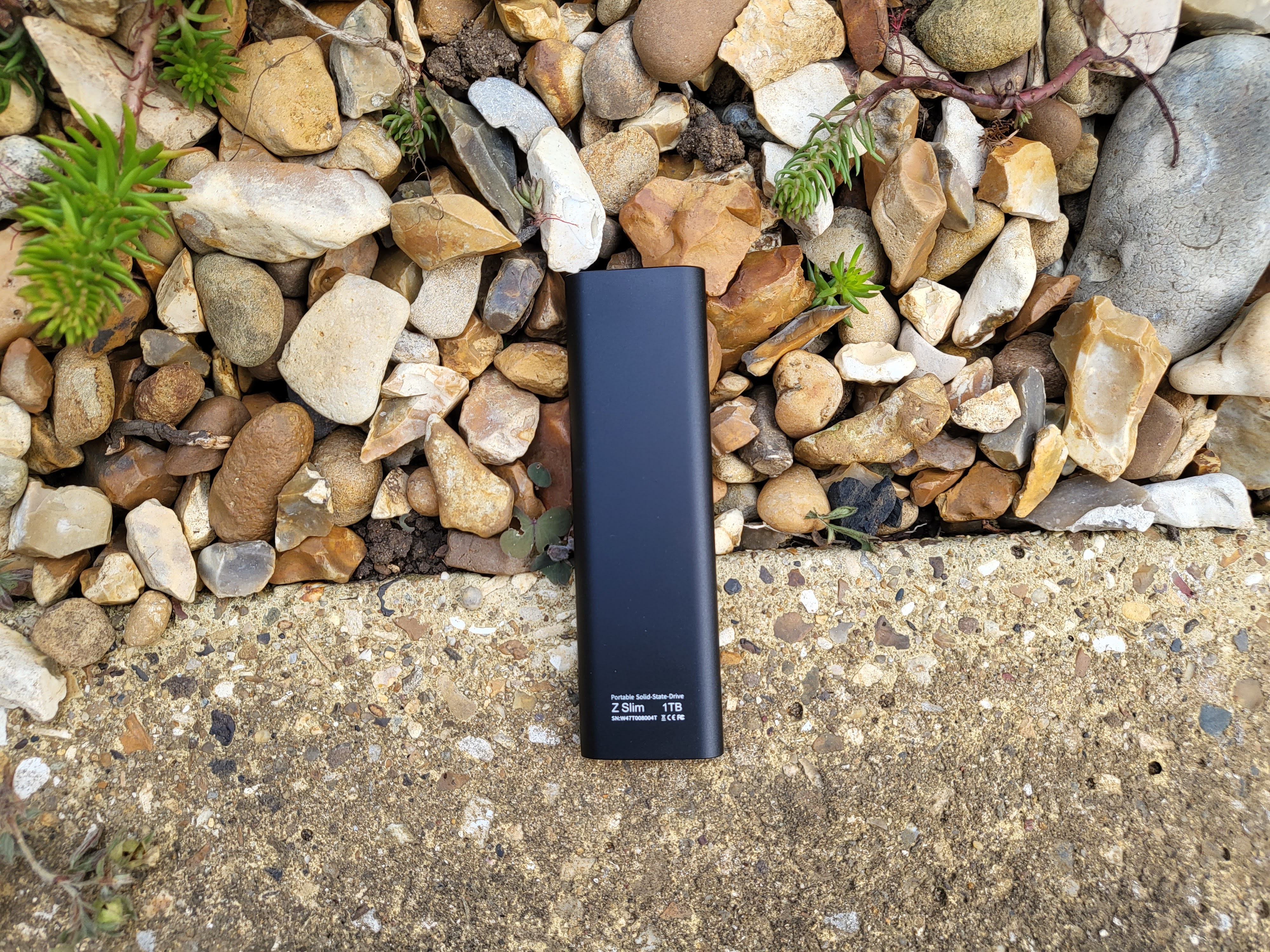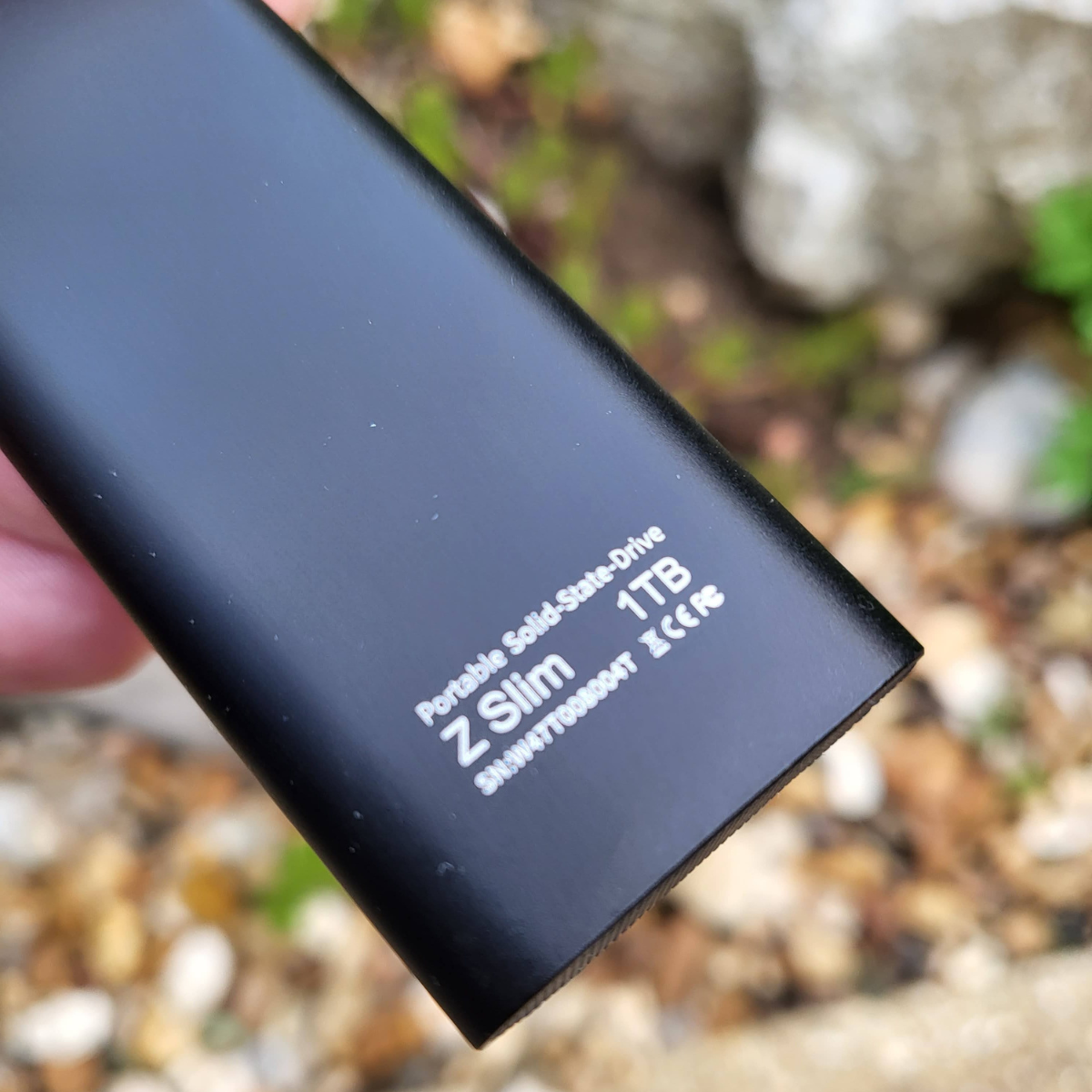TechRadar Verdict
Competition is tough in the world of portable SSD, especially at the low end, and the Netac Z Slim doesn’t fare well when it comes to sheer value for money. Its performance might have been considered adequate a few years ago but given the prevalence of USB 3.2 Gen 2, there’s no excuse, really, for not offering faster speeds.
Pros
- +
Solidly built
- +
Lightweight
- +
Three year warranty
Cons
- -
More expensive than the competition
- -
No IP rating
- -
No software bundle
Why you can trust TechRadar
One-minute review
The Netac Z Slim is a portable solid state drive that is lightweight, compact, reasonably solid, affordable but slow.
It has a full aluminum case which can scratch easily but doesn’t feel tacky given its black color and the lack of any garish features. The Z Slim comes with the strict minimum when it comes to accessories: just USB cable, an adapter and a pouch and there is no bundled software. There’s an LED as well and is available in capacities ranging from 250GB to 2TB. Just bear in mind that it doesn’t carry any IP or MIL-STD ratings; so don’t drop it in a glass of water to impress your colleagues, this is not a water resistant device. It still feels reasonably solid but be aware of these limitations (even if it includes a three-year warranty).
Netac claims that the drive should reach read/write speeds of up to 500 MBps which is slow by today’s standards. That’s because the company chose to use SATA parts rather than the more common and faster NVMe; I cannot fathom; it looks - to me at least - as a way to drive the bill of material to as low as possible. But bargain basement, this one isn’t.
The Z Slim ranks amongst the most expensive “slow” (i.e. SATA based) external SSDs on the market right now. To make things worse, there’s even a handful of portable SSD that offer twice the speed of the Z Slim with a lower price tag.

Netac Z Slim: Pricing and availability
- How much does it cost? $109.99 (2TB), $65.99 (1TB), $42.99 (500GB), $31.99 (250GB)
- When is it available? Now
- Where can you get it? Globally
In a fiercely competitive category, the Z Slim faces some tough competition; with little to differentiate between the products, it’s very often down to price and at the time of writing, that’s a contest that the Z Slim has lost and one that ultimately prevents it from entering our best portable SSD buying guide.

Netac Z Slim: Benchmark
Given what I knew about the Z Slim, the test results are in no way surprising. Netac says that it will reach 550 MBps on read and write and we got close to those numbers during our synthetic tests. That number goes way down in real life tests, just under 400 MBps. The drive didn’t warm up even under load.
| Row 0 - Cell 0 | Read (MBps) | Write (MBps) |
| AJA | 501 | 461 |
| CrystalDiskMark | 588 | 508 |
| ATTO | 533 | 481 |
| AS SSD | 510 | 465 |
| Real Life | 394 | 394 |
Netac Z Slim: Specs
| Row 0 - Cell 0 | Row 0 - Cell 1 |
| Capacities available | 250GB, 500GB, 1TB, 2TB |
| Size | 100 x 29 x 9mm |
| Weight | 30g |
| Enclosure material | ABS plastic |
| Connector | USB-C |
| Technology | USB 3.2 Gen 2 |
| Warranty (in years) | 3 |
| Rated R/W speeds (MBps) | 550/550 |
| Software bundle | No |
| Accessories | Sleeve, USB-A to USB-C cable and a USB-C adapter |

Should I buy the Netac Z Slim?
Buy it if...
You want a very small external SSD
The Z Slim is very small and is probably as thin as it gets given that a USB-C connector is quite thick.
Don't buy it...
You want a true rugged portable SSD
The Z Slim is not a rugged external SSD although its design should make it more durable than others. Look elsewhere if you want something that has an IP-rating or adheres to MIL-STD-810.
You want a fast SSD
The Z Slim is a fairly new SSD so we don’t understand why Netac decided to stick with SATA-level performance. As such this is one of the slowest external SSD we’ve tested in recent months, thanks to this obsolete technology.
You want the cheapest external SSD
The Z Slim is about 50% more expensive than the external 1TB SSD we’ve found (that’s the Lexar SL200). The latter is much bigger than the Z Slim but that should be fine for users that only look for the most affordable external storage.
Netac Z Slim alternatives
| Row 0 - Cell 0 | SSK | Silicon Power PC60 | Lexar SL200 |
| Capacity | 1TB | 0.96TB | 1TB |
| Price | $59.99 | $49.99 | $44.88 |
| Speed | USB 3.2 Gen 2 | USB 3.2 Gen 2 | USB 3.2 Gen 2 |
| IP rated | no | no | no |
| Warranty (yrs) | 3 | 3 | 3 |
The SSK is the fastest of the affordable alternatives with a rated read/write speed of 1050/1000 MBps. It has a useful carabiner and is a tad thicker than the Z Slim.
The Silicon Power PC60 is bland, unassuming and average in everything except its price. It is an entry-level, affordable and capable device that is far, far cheaper than the competition.
The Lexar SL2000 portable SSD is the cheapest 1TB portable SSD right now. Its chassis is mainly plastic and it is bulkier than the Z Slim but that shouldn’t bother bargain hunters.
How I tested the Netac Z Slim
After having formatted the Z Slim to exFAT, I test it the same way I test other storage components (external HDD, microSD cards etc). I use the latest versions of CrystalDiskMark, Atto, AS SSD and AJA benchmarks, noting the best scores achieved in each. They are all free and can be downloaded by anyone. I also transferred a folder of random files, roughly 10GB in size, to get a rough idea of real life performance.

Désiré has been musing and writing about technology during a career spanning four decades. He dabbled in website builders and web hosting when DHTML and frames were in vogue and started narrating about the impact of technology on society just before the start of the Y2K hysteria at the turn of the last millennium.
